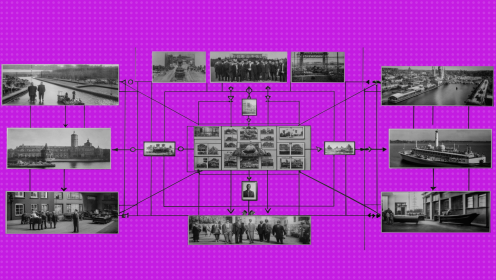Every job has a routine. Sometimes it takes so much time to solve routine issues that it seems as if the whole working day consists of it. In fact, this time could be saved by automating at least some of the internal processes.
Workflow automation — excluding an employee from participating in work issues. Of course, you can't completely exclude it yet (no system can work without a person at all), but you can remove some of the tasks from it.
Less routine. Small mistake. More available time
There are many ways to automate routine workflows. Some tools are designed specifically for automating small routines:
Others help with automation indirectly:
- сproject and task management systems (WEEEK, Trello, Asana, and others),
- cloud services (Dropbox, Google Drive, MEGA, Yandex.Disk and others),
- time trackers (Toggl, Harvest, AtTrack and others).
For more information about automation services, see our article about tools for remote work.
The scope for automation is huge, but one question remains...
Why automate your work at all?
The easiest way to explain it is with an example.
To start working on the task, the manager must talk to the client, formulate requirements, and pass the task to the performer. If all is well, the manager will start executing the task, and if necessary, with clarifying questions, will return the task back to the manager. When the task is ready, the manager checks the result and sends it to the client for approval.
Well, if this is the end of the job. But the client can re-submit the task for revision, and the whole process will start again. Imagine how long it will take if all the participants call each other, wait for face-to-face meetings, and agree on free time to discuss edits. And if the case involves force majeure, the transfer of materials from the client to the performer will take more time than the work itself.
If these actions are correctly automated:
- —all participants in the process will be able to:
- —easily and quickly transfer tasks,
- —keep track of deadlines and loading,
- —be aware of changes,
- —make fewer mistakes (forget, lose information about tasks, etc.),
- —build work schedules;
- —new participants will be able to quickly join the work.
If you have a small team and few responsibilities, you should implement automation at least partially. Even a small saving of time and money is good. And if you have ten people or more, the advantages of automation will completely cover all the problems from its implementation.
What processes can be automated?
Any. Anything that isn't directly related to the job itself. There are so many automation scenarios that there is not enough time to talk about each of them, so I will touch on the most important ones, in my opinion.
Incoming and outgoing requests
Comments from the client, a new task from the manager, sending for revision from the management, returning materials for review and approval, any transfer of the task from one performer to another.
If all these processes are brought to one view and done in one place, it will greatly simplify life. First, a single format for transmitting information will eliminate the possibility of misunderstandings. Second, if the conversation is conducted in one place (for example, in the task description), all participants will receive up-to-date information and will not miss anything.
Problem statement
Or start projects. So that you don't have to do everything from scratch every time, many workflow automation services will simplify your life using templates — just fill in the necessary fields (performer, deadline, etc.) and put the task to work.
Loading employees
To correctly distribute tasks among employees without automation, you need to talk to each of them and find out their workload. With automation, everything is easier: when all tasks have deadlines, employees conscientiously note the time spent on them and work in the same system, you can view the load schedule in a couple of clicks. Yes, in a couple of clicks — with the development of neural networks, there are systems that offer the performer themselves and redistribute tasks, depending on the workload and skills of each employee.
Storage of materials
Services for storing information from various tools will greatly help the team, where one writes, the second designs, the third draws, the fourth programs — and all this still needs to be shown to the client.
It is very cool when all, even intermediate, versions of materials are stored (for example, in Google Documents you can see the entire history of changes to the document, in Dropbox and MEGA all versions of files are stored, and any Git is simply designed to track code versions). This way you can not only provide all employees with the necessary materials, but also roll back if necessary in case of serious edits.
Business correspondence and documentation
Automatic notifications about changes in tasks, centralized invitations to meetings, information about current and new projects, reports on work done - in general, automation of any forms of text and documents that take time when filled out manually and sent independently makes life much easier.
What should I do before implementing automation?
Before you start automation, understand the internal processes in the company and everything else:
- Analyze what the team is already able to do quickly, and what causes problems? What takes a lot of time but doesn't need human input? These are the processes that need to be automated first.
- Think about what data the team needs for most types of work. This can include customer names and contacts, task numbers, and links to early projects. Collect all the necessary data in the tables. They will help you at the stage of automation implementation.
- Define the job responsibilities of each team member. Ideally, they will also be recorded in a separate table with names, contacts, and access to current tasks. This will help you as a Manager (you will finally determine exactly what and how each employee should do), and future automation for more accurate distribution of tasks and relationships.
You will get a lot of useful information at the output:
- 1. which processes need to be automated to reduce time, and which processes need to be automated to correct errors;
- 2. what information should be stored as a database with access from applications;
- 3. what you need to know when setting a task;
- 4. how to set up automatic task redirection and much more.
You can, of course, gather developers and make an automation system just for your needs, but it is much easier and faster (and this is important when you lose time on a routine) to use a ready-made service, configuring it for yourself.
In any case, automated processes will make your work easier and improve business performance - try to implement them in at least part of the processes, and you will see how the team's efficiency will increase.

















